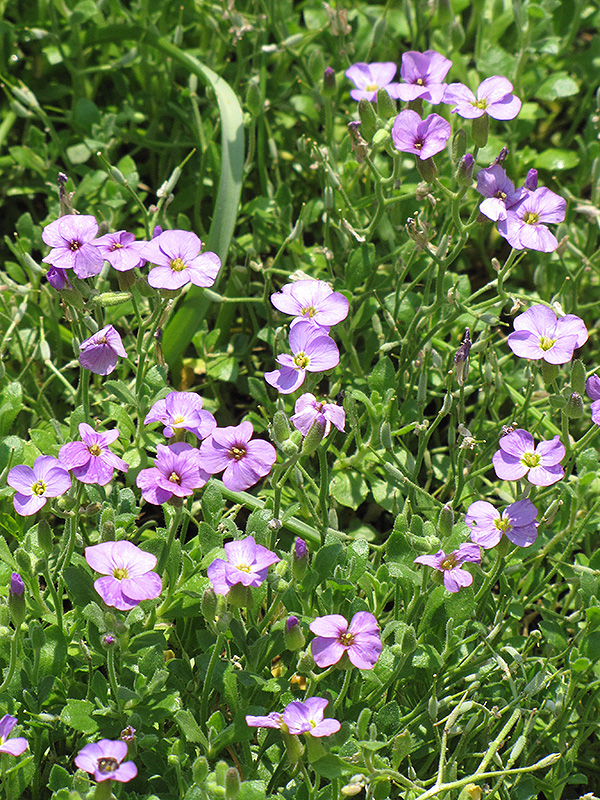Height: 6 inches
Spread: 18 inches
Sunlight:
![]()
![]()
Hardiness Zone: 4a
Other Names: Aubretia Rock Cress
Description:
This stunning alpine variety produces beautiful cascades of violet flowers in springtime; for the rest of the season it is an attractive green mat adding tremendous intrest to the rock garden or border edges
Ornamental Features
Rock Cress is smothered in stunning violet cup-shaped flowers with yellow eyes at the ends of the stems from mid to late spring. Its small tomentose round leaves remain green in color throughout the year.
Landscape Attributes
Rock Cress is a dense herbaceous evergreen perennial with a ground-hugging habit of growth. Its relatively fine texture sets it apart from other garden plants with less refined foliage.
This is a relatively low maintenance plant, and should only be pruned after flowering to avoid removing any of the current season's flowers. It is a good choice for attracting butterflies to your yard. It has no significant negative characteristics.
Rock Cress is recommended for the following landscape applications;
- Rock/Alpine Gardens
- Border Edging
- Groundcover
Planting & Growing
Rock Cress will grow to be only 6 inches tall at maturity, with a spread of 18 inches. Its foliage tends to remain low and dense right to the ground. It grows at a slow rate, and under ideal conditions can be expected to live for approximately 10 years. As an evegreen perennial, this plant will typically keep its form and foliage year-round.
This plant does best in full sun to partial shade. It prefers to grow in average to moist conditions, and shouldn't be allowed to dry out. It is not particular as to soil type, but has a definite preference for alkaline soils. It is somewhat tolerant of urban pollution. Consider applying a thick mulch around the root zone over the growing season to conserve soil moisture. This species is not originally from North America. It can be propagated by division.







